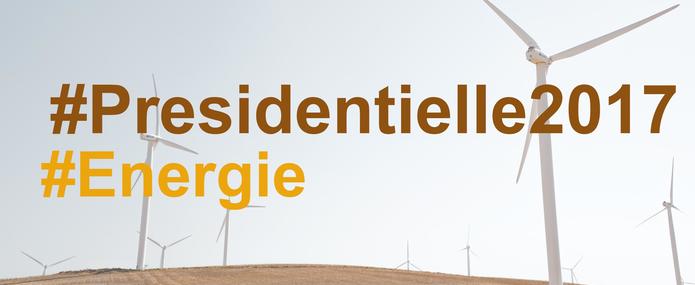In recent years, France has demonstrated its commitment to the energy and climate transition, a commitment which has been marked by three major steps: the organization of a national debate in 2013, the adoption of the Law for Energy Transition for Green Growth , and at the end of 2015 the organization of the 21st Conference of the Parties to the UN Framework Convention on Climate Change in Paris. Although it is now receiving less media attention, 2017 is a pivotal year for the French energy transition. There are two key issues: the implementation of the necessary levers to position France on a trajectory that is consistent with its legally binding objectives; and the linking of French strategy with the European Energy Union project.
Development of an operational roadmap
With the enactment of the Law for Energy Transition and Green Growth, the International Energy Agency has stated that France is a “global leader” due to its new governance framework. However, there remains room for improvement in terms of the operational value of the first planning documents – the French National Low-Carbon Strategy (SNBC) and the Multi-year Energy Plan (PPE). In particular, these documents do not fully satisfy their primary purpose of building a coherent and comprehensive roadmap that details the way ahead from the current state of the energy system to reach the objectives set for 2025, 2030 and 2050. This issue is particularly relevant for the transformation of the electricity system, as illustrated by two recent IDDRI studies (“Transition of the French electricity system towards 2030 – an exploratory analysis of the issues and trajectories”; and “Electricity demand in France: what are the energy transition issues?”). The current set of policy and investment planning tools therefore only provide part of the information that is needed to inform key strategic choices, even though these choices will be essential over the next ten years. Firstly, on the supply side, the technical and economic uncertainties surrounding the extension of existing nuclear power plants have been rapidly side-lined, despite the need to anticipate the transformations in order to reach the defined targets. Secondly, the issue of the role of the electricity vector in energy consumption and its evolution has not been addressed, despite its decisive aspect in ensuring the security of the electricity supply in the French system and its consequences for the management of the production mix.
Accelerating implementation: short-term signals
Establishing tools and instruments that are sufficiently ambitious to accelerate the transition is a second essential challenge. Firstly, in terms of energy efficiency: the 50% reduction in final energy consumption by 2050 is necessary to achieve the long-term emission reduction goal (-75% compared to 1990 levels). In this context, it is surprising that the implementation tools, which are costly and not very effective, have hardly changed at all, particularly regarding the support schemes for energy renovation to stimulate a real change in the French energy landscape, which nevertheless remains the short-term priority. Secondly, another challenge concerns the acceleration of the development of renewable energies, which in 2015 already accounted for more than half of the worldwide new electricity generation capacity.[1] Encouraged by the decreasing costs of the wind and photovoltaic technologies, renewable energy is the only energy market that is currently growing.. In France, while certain regulatory instruments have been revised and a tender schedule has been defined since the adoption of the Law, it is clear that the deployment rates still need a considerable increase to be in line with the trajectories targeted by the PPE. For instance, 1.9 GW of renewable energy, photovoltaic and wind generated, was installed in 2016, which is significantly lower than the 2.9 GW to 3.6 GW per year required to achieve the low and high targets set for 2023. Finally, the French project is based, in part, on the ambitious goal of the mass adoption of the electric vehicle. Despite the redefinition of purchasing incentives, a six-fold increase in sales is required by 2020 (from 20,000 to 120,000 new electric vehicles per year). These sectoral objectives have a central role in setting the expectations of public and private actors and fine-tuning the transition.
Integrating the European dimension of energy transition
Finally, with regard to energy, the physical reality of interconnected electricity and gas networks at the continental level, along with the Energy Union’s strategy, means that it is essential to take the European dimension into account in energy planning. Here again, this is particularly relevant for the electricity system. While most European countries continue to bet on renewable energies reinforcing the benefits of cooperation, the question remains: will France be a driving force in strengthening continental solidarity? If not, will a unilateral strategy based on the increase of its electricity exports find sufficient demand abroad? And to do so, what price will be obtained in a wholesale European electricity market that, over the first eight months of 2016, has been at its lowest level for ten years? The French energy transition strategy demonstrates unprecedented ambition, which requires strong political decisions and coherent and operational planning. In the face of difficult decisions, there is always the temptation to prolong the status quo. But this could prove to be risky, and ultimately more costly. It is therefore essential to deliver on the commitments made and to adopt a proactive approach, both at the national level and within the framework of the Energy Union project, in which France has a major role to play. To this end, it is important to begin as soon as possible a new planning and policy cycle to better define a more coherent and transparent set of trajectories and sectoral milestones towards achieving the targets of the Law.
[1] Excluding major hydroelectric projects.
This blog post is part of a series on energy transition in the French presidential election:



